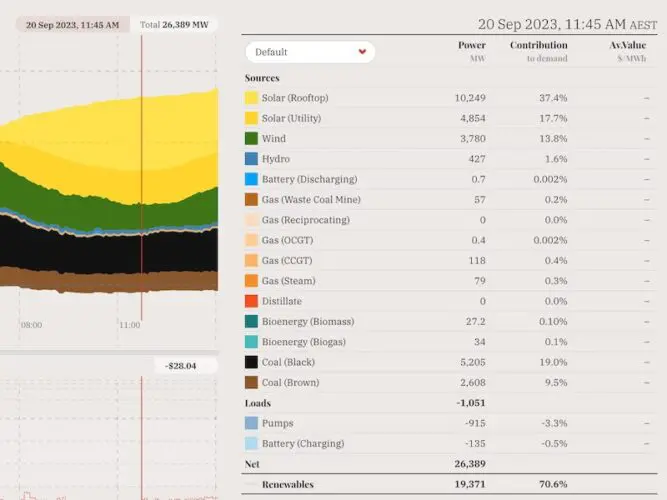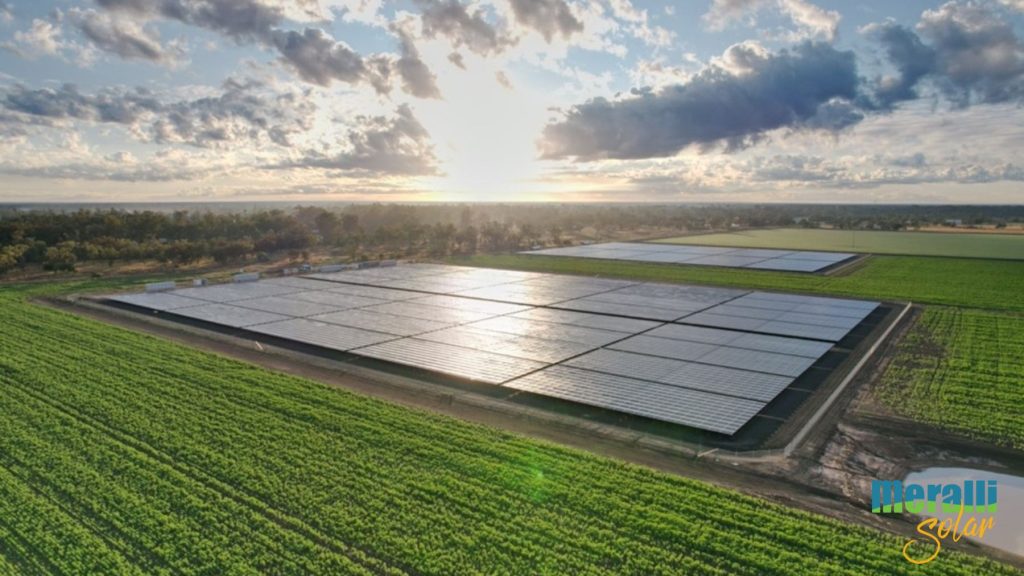Here’s a wrap-up of all the key news across solar and other renewables last week. Grab your coffee, here’s the industry must-knows for the week (26/09/2023 edition):
Renewables sail past 70% on Australia’s main grid, sending coal to fresh lows
Renewable energy generation set a new record on Australia’s National Electricity Market on Wednesday, with the combined contributions from rooftop solar, and large-scale solar and wind pushing past 70 percent briefly at 11am and then again at 11.45am, at an all-time high of 70.6%. (Renew Economy)
Have Your Say: Consultation to commence for WA’s Renewable Hydrogen Strategy refresh
The Western Australian (WA) Government has announced plans to revise its Renewable Hydrogen Strategy after meeting its 2022 goals. A consultation paper has been released for feedback and will be available for four weeks. Read the full paper and have your say here. (Australian Resources)
On-Farm Renewables workshops to discuss benefits of renewable energy
Farmers for Climate Action is set to hold a series of On-Farm Renewables workshops for Victorian farmers to discuss the benefits of renewable energy, storage, and electrification to their farms and communities. Farmers for Climate Action will hold workshops for farmers and community members in Seymour, Echuca, Bendigo, Mildura, and Euroa in the first week of October. Farmers will hear from electrification and renewables experts, as well as other farmers who have made the switch to cheaper, greener energy. (Australian Resources)
International clean energy research projects announced
CSIRO has announced two multilateral international research programs as it collaborates with global researchers to tackle challenges in clean energy production and storage. In a joint effort between Australia, the US, Canada, and the UK, two multilateral research projects have been announced today as part of the National Science Foundation Global Centers in Climate Change and Clean Energy (NSF Global Centers) program. (Energy Magazine)
OPINION: Australia needs net zero by 2035, not 2050
This week, Australia’s leading engineers and technology experts from the Australian Academy of Technological Sciences and Engineering have called for Australia to get to net zero 15 years quicker than our current goal of 2050 to be more consistent with a 1.5℃ trajectory. (PV Magazine)
WEBINAR: Prospects of bringing together PV, storage and EV charging | PV Magazine
MONDAY, 25. SEPTEMBER 2023 – 6:00 PM – 7:00 PM AEST, SYDNEY
• Challenges of integrating multiple technologies in single devices
• Potential advantages of the SigenStor system
• Business cases
• Q&A
Register here.
Net Zero by 2035 | Energy Insiders Podcast
Katherine Woodthorpe, from the Australian Academy of Technological Sciences and Engineering, on why Australia should fast-track its net zero ambitions. Plus: The nuclear debate and renewable records.
Australia’s biggest vehicle to grid installation | The Driven Podcast
Mark Gregory from Flinders University discusses the development of vehicle-to-grid technology, and the future of cars as batteries on wheels.
Becoming a Net Zero Nation — ATSE Position Statement
The Australian Academy of Technological Sciences and Engineering (ATSE) calls on the Federal Government to commit to an ambitious target of net zero greenhouse gas emissions by 2035.
Our photo of the week (from the Meralli archives) was taken at the Latitude Solar Farm, a generator feeding into the grid with a reverse DC coupled battery system. Only 8km from Goondiwindi NSW, the project combines 4.99MW solar and a 4.95MW AC/11MWh lithium-ion battery storage system. Latitude is named for its location in Boggabilla, which lies at the same latitude as Byron Bay, but around six hours to the west. The Latitude Solar Farm is capable of powering the equivalent of 2,472 homes and has an estimated CO2 offset of 10,269 tonnes.



